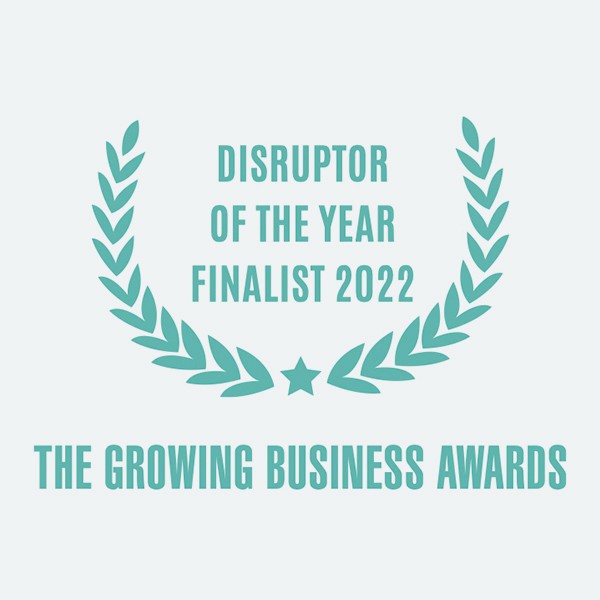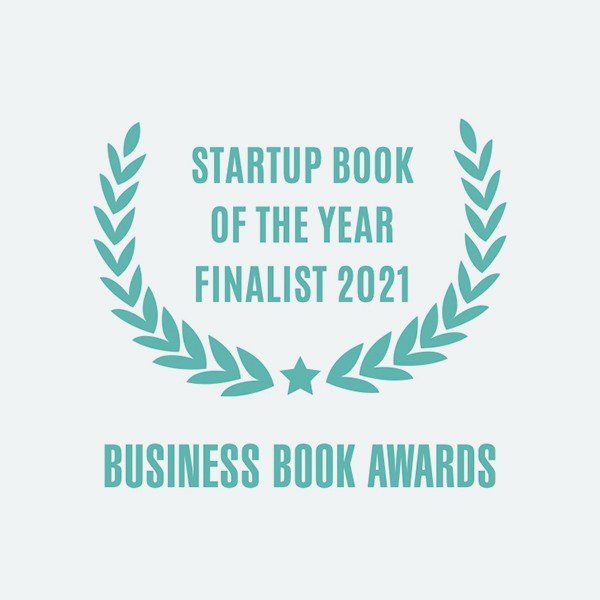
Pitch Deck for Seed Funding Services
At Robot Mascot we’ve supported thousands of founders to develop business plan assets including pitch decks for seed funding.
We’ve supported founders from all over the world, helping them develop a pitch deck for seed funding via our global award-winning investor pitch service, PitchReady. As a result of our help in preparing their business plan assets including a pitch deck for seed funding, our founders find they are 40 times more likely to raise investment.
This page will tell you exactly what a pitch deck for seed funding needs to be, how we develop pitch decks for seed funding and how to use yours when pitching for investment.
What is the role of a pitch deck in seeking seed funding?
Your pitch deck is an essential tool for securing funding. It’s a multifaceted instrument that communicates your vision, demonstrates your business savvy and persuades investors to embark on a journey with you. Here are the key roles that a seed investment pitch deck plays in helping you secure seed funding:
The gateway to first impressions
First, the pitch deck is your opening gambit, the first handshake with potential investors. In a landscape where first impressions are pivotal, it acts as a silent ambassador of your brand, setting the tone for what follows. It’s not merely a collection of slides; it’s the narrative of your entrepreneurial journey, told with clarity and conviction.
READ: How Much You Should Spend On Startup Branding
A storytelling canvas
At its core, the pitch deck is a storytelling device. It weaves a compelling tale of a problem, a solution, and the triumph that your product or service promises. This narrative is not just about captivating your audience; it’s about making them believe in your vision, showing them the transformative potential of your idea in a market ripe for disruption.
The art of persuasion
The seed funding pitch deck also plays a critical role in persuasion. It’s not enough to have a groundbreaking idea; you must also convince investors of its viability. Through a blend of market analysis, financial projections, and strategic roadmaps, your pitch deck demonstrates not just the ‘what’ and the ‘why’, but the ‘how’ of your business model.
A mirror to your business acumen
Your deck is a testament to your business acumen. A well-crafted seed investment pitch deck shows that you understand your market, recognise your competition, and are aware of your business’s strengths and weaknesses. It’s a showcase of your ability to think critically and strategically about your venture.
The balancing act
Crafting the perfect pitch deck is a balancing act. The best seed deck requires a harmonious blend of information, persuasion, and engagement. You need to be detailed yet concise, informative yet engaging. It’s about striking the right chord with potential investors, providing them with enough information to pique their interest, but leaving them wanting more.
What’s in a pitch deck for seed funding?
All businesses and their needs are different, so all pitch decks will be unique. However, the list below is a good guide for what should be in a pitch deck for seed funding.
- Elevator Pitch
- Vision and value proposition
- Market opportunity and size
- The problem and your solution
- Product or service demonstration
- Business model
- Go-to-market strategy
- Competitive analysis
- The team
- Financials and projections
- Milestones and traction
- Funding needs and use of funds
- Call to action.
How do you develop a pitch deck for seed funding?
In a seed funding pitch deck, each of the elements cited above should be tailored to show the potential of your early-stage startup. It’s about painting a picture of a business that has a clear and promising path to success. Most importantly it’s about saying the right things in the right way. At Robot Mascot we’ve developed our unique seed funding pitch deck structure – the Five Acts of the Perfect Pitch – that delivers investors what they want to hear in an order they want to hear it.
DOWNLOAD: The Five Acts of the Perfect Pitch
Act One: The Hook
Step 1: The Elevator Pitch
An elevator pitch within a seed funding pitch deck serves as a succinct and compelling introduction to a startup’s business concept, addressing key elements in a brief and engaging manner. The purpose is to capture the investor’s attention, communicate the unique value proposition of the startup, and generate interest in reading the seed deck further.
Step 2: The vision and value proposition
In a seed funding pitch deck, this is your chance to make a powerful emotional connection with the investor. Clearly articulate what sets your startup apart. Describe your vision in a compelling way, focusing on what makes your early-stage business unique and promising. This is about capturing the essence of your startup and presenting a value proposition that resonates with seed-stage investors.
READ: How To Value Your Startup And Decide How Much Equity To Give Away
Act Two: The Essence
Step 3: The problem and your solution
Clearly define the problem your startup aims to solve. Then, position your product or service as not just a viable solution, but an innovative and superior one. In the context of seed funding, it’s essential to show that your solution has the potential to disrupt the market or fill a significant gap.
Step 4: The target market
In a pitch deck for seed funding it is important to showcase a concise snapshot of the specific audience your startup aims to serve. Crucially it demonstrates your understanding of the market, the demand for your solution, and the scalability of the business. By succinctly outlining the target market, you provide context for the problem being addressed and reinforce the market opportunity.
Act Three: The Evidence
Step 5: Traction and Validation
The Traction and Validation section provides a succinct showcase of the startup’s progress and real-world acceptance. It encapsulates key milestones, user adoption rates, revenue figures, or other pertinent metrics that indicate the business’s traction and validation of its value proposition. This slide is pivotal for investors as it offers tangible evidence of market demand.
Step 6: Market opportunity and size
For seed funding, you must demonstrate a thorough understanding of your target market. Use reliable data to show the market’s potential size and how your startup plans to tap into it. This section should convince investors that there’s a significant opportunity for growth, which is critical for early-stage investments.
Act Four: The Plan
Step 7: Business model
Explain how your startup will generate revenue. Detail your planned revenue streams and the rationale behind them. For seed-stage investors, it’s important to see that you’ve thought through how the business will sustain itself financially in its early stages and how it can scale.
Step 8: Go-to-market strategy
Outline your strategy for reaching your initial customers. Include your plans for marketing, sales, and distribution. This section should demonstrate a clear plan for market entry and initial customer acquisition, which is important for convincing seed-stage investors of your startup’s potential for early traction.
Step 9: Competitive analysis
Recognise your competition and then demonstrate your startup’s competitive advantage. This is particularly important in a seed funding pitch deck, as investors want to know how you plan to outperform existing solutions and capture market share in the early stages.
Step 10: The team
In seed funding, the team’s capabilities are often as important as the idea itself. Highlight the skills, experience, and passion of your founding team. Show how their backgrounds make them uniquely qualified to turn this early-stage idea into a successful business.
Act Five: The Ask
Step 11: Financials and projections
Present a clear and realistic overview of your current financial situation and future projections. Include initial financial needs, how the seed funding will be used, and projections for growth. Seed-stage investors are looking for realistic, yet ambitious financial planning that shows a path to growth and profitability.
Step 12: Investment Requirements
In a pitch deck for seed funding, it’s important to succinctly outline the financial needs of the startup to achieve its next set of milestones. This crucial section breaks down the funding allocation, detailing how much investment is needed, and how it will be utilised across key areas of the business. By articulating the specific funding ask, the equity on offer, and the expected return on investment, this slide assists in aligning investor expectations with your growth plans.
READ: Five Ways To Make Your Pitch Deck Stand Out From the Crowd
What makes a pitch deck for seed funding different from other pitch decks for other types of investment?
A pitch deck for seed funding differs from pitch decks for other types of investment primarily due to the stage of the business, the nature of the investors, and the specific goals of the funding round.
Here are some key distinctions:
Focus on vision and potential
Seed funding pitch decks often emphasise the startup’s vision and potential more than established metrics or extensive financial histories, which might not yet be available. The narrative is more about the promise and the big idea, as opposed to later-stage decks that focus on proven traction and financial performance.
READ: Raising Pre-Seed Investment: How To Prove Your Concept To Investors
Early-stage business model
In seed funding decks, the business model might still be in a developmental phase. The emphasis is on the feasibility and scalability of the model rather than on established revenue streams and profitability, which are more critical in later-stage investment rounds.
Market opportunity over traction
While traction is important, the best seed round pitch decks will focus more on the size and accessibility of the market opportunity because the product or service may not yet have a significant market presence or customer base, unlike in later funding stages where actual market traction is a key focus.
Team credentials and passion
Given the early stage of the business, the team’s credentials, expertise, and passion are often highlighted more in seed funding decks. Investors are betting on the team’s ability to execute the vision as much as on the idea itself, which is a slightly different emphasis than in later rounds where the team’s ability to scale a business is more in focus.
Simpler financial projections
Financial projections in seed funding decks are usually less detailed and more about showing the potential for growth and scalability. Later-stage investments require more detailed, data-backed financial projections and historical financial performance data.
Use of funds and milestones
Seed funding decks often need to clearly articulate how the seed funding will be used to achieve specific milestones that are critical for the business’s next stage. This is different from later-stage decks, where the use of funds might be geared more towards scaling operations or entering new markets.
Investor profile
Seed funding decks are often tailored to appeal to angel investors, early-stage venture capitalists, and sometimes incubators or accelerators. These investors are typically more accustomed to and comfortable with the higher risks associated with early-stage investments. In contrast, later-stage decks might be targeted at institutional investors, venture capital firms, or strategic partners who have different risk appetites and expectations.
READ: A Complete Guide To Angel Investors For Small Businesses And Startups
Narrative and storytelling
The narrative and storytelling aspect is vital in a seed funding pitch deck. Since there’s less historical data and performance metrics to rely on, the way the story is told can play a significant role in capturing the interest and imagination of potential investors.
Essentially, a pitch deck for seed funding is tailored to highlight the startup’s future potential, market opportunity, and the strength of the founding team, with less emphasis on the hard data and financial track records important in later-stage investment rounds.
Find out more in our guide: Funding Rounds Explained – A Guide For Startups
Getting your business ready: Understanding Investment Readiness
Before you consider pitching your business to investors, you must first ensure that your business is indeed ready for investment – that it is ‘investment ready’.
Investment readiness refers to the state in which a startup or business has prepared itself to be an attractive prospect for investors. Being ‘investment ready’ means a founder has all the elements in place that investors look for when considering whether to commit funds to a business – including a compelling and articulate pitch deck for seed funding.
There are investor readiness agencies for startups that can help businesses get ready for investment. We at Robot Mascot are one such company.
If you are seeking investment for your business and need help developing your seed funding pitch deck why not get in touch?






Copyright ©Robot Mascot Ltd. All rights reserved.



